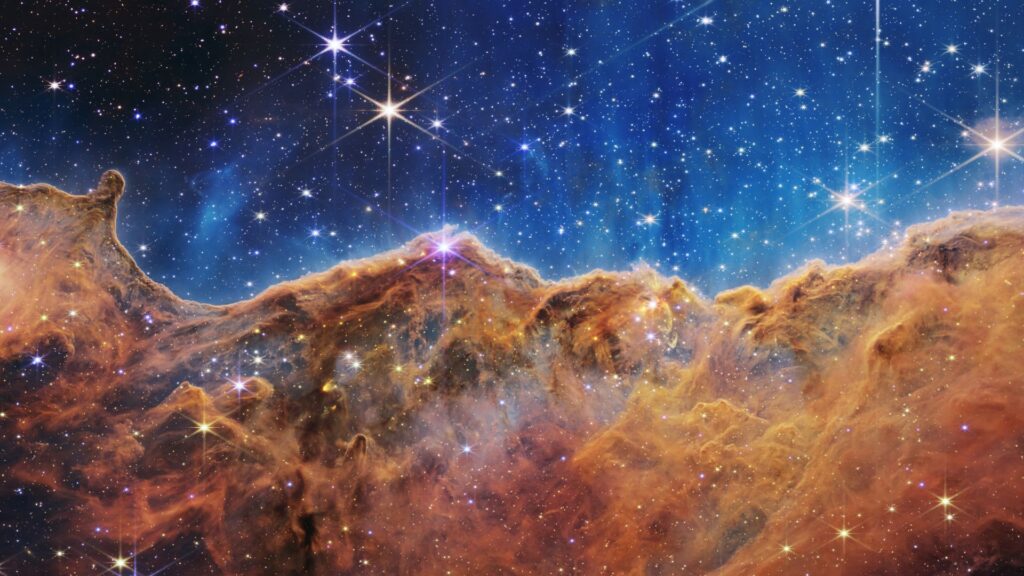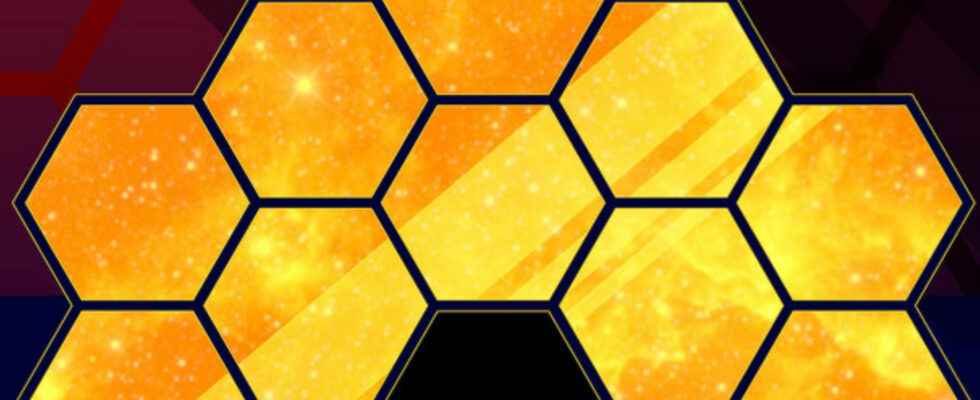A year after its launch, the James Webb Space Telescope was able to observe a number of exoplanets, distant galaxies or stars in formation. An exciting record that gives hope for the best for the future.
Now December 25 is not just Christmas Day, but also the birthday of the most ambitious telescope in decades. The James Webb Space Telescope blows out its first candle today, one year to the day after its launch. A year that seems to have passed at full speed between the almost daily follow-up of its journey, the deployment of its mirrors, then from July the photos distilled over the months, each more impressive than the other.
But, now that the information sent by the telescope has had time, for some, to be digested, studied and put into context, it is high time to make an initial assessment. Is this observatory as revolutionary as it was promised?
” Yes, clearlysays Lucie Leboulleux, specialist in exoplanets at the Institute of Planetology and Astrophysics in Grenoble. It keeps all its promises and has been able to progress in all the areas planned: the observation of exoplanets, but also that of distant galaxies and star formation zones. He brought answers absolutely everywhere. »
” A level of precision that exceeds all expectations »
In all of this, the researcher was particularly marked by the study of WASP-39 b, an exoplanet whose spectrum, that is to say all the molecules that make up an atmosphere, was able to be analysed. This made it possible to identify carbon dioxide, a first outside the Solar System. ” This is the first time we have such a precise signalspecifies Lucie Leboulleux. Interestingly, CO₂ is linked to life, and while this planet is most certainly uninhabitable, that means detection of CO₂ on other, more Earth-like planets is possible. »
But it’s not just planetary scientists who benefit from James Webb, Romane Le Gal, astronomer at the Observatoire des Sciences de l’Univers de Grenoble, is rather fascinated by other images, such as the Carina Nebula: ” It is a nursery of stars, an area where stars are born. This image in particular is breathtaking, because you can see the smallest details: the clumps of material that form, the dust and gases that create a disc before the appearance of a star… It’s a level of sharpness and precision that exceeds all expectations. »

These observations gave rise to a veritable commotion among specialists in the discipline, because now that the space telescope has provided such a quality image, other telescopes, such as ALMA in Chile, have started to point their antennas towards the same area in order to provide other types of data and better understand all the phenomena in progress. ” The goal is to have a global vision, adds Romane Le Galidentify the smallest molecules in gas, dust or ice. »
” These images are fascinating because they provide contextsums up Olivier Berné, astrophysicist at the Institute for Research in Astrophysics and Planetology in Toulouse. Having these global images is very useful afterwards for doing spectroscopy, and that’s what we do about the Orion Nebula “. This other area where stars are born en masse is part of the “early releases” programs, that is to say the first targets of the observatory at the very beginning of its start-up. And the data is already abundant. ” For now, we have mostly confirmations of what we thoughttempers Olivier Berné. But from the start of the school year, we will carry out additional observations to go further, in more detail, and find the explanation of the phenomena around the formation of stars. »
” This is just the beginning “, predict the astronomers
” The next step is that of surprisesassures Romane Le Gal. We had the answers we already knew, now we are going towards the unexpected, with additional information that may surprise us, that’s what we hope anyway! »
Among the expected surprises: the Iris Nebula which should be in the viewfinder of the telescope in 2023. A hostile and very sparse zone where giant fullerene molecules are formed, chains of 60 carbon atoms, which is surprisingly large and complex for such an environment. The advanced scientific instrument could explain the phenomena that lead to its creation.

” I think we will have other surprises in 2023assures Olivier Berné. When we come across the unexpected, it takes time to verify and know exactly what we saw, but it will happen! »
Lucie Leboulleux sees even further: “ This is just the beginning. The deployment of the mirror and the whole set-up of the telescope have been so perfect that it opens up the possibility of sending an even larger craft within a few decades. We always fear a bad resolution, a badly deployed instrument, or a lower sensitivity, but there, everything is so optimal that the prospects are much better. »
If 2022 was the year in which James Webb showed the extent of his abilities, 2023 could well be the year of the first big surprising discoveries. In any case, professionals and amateurs alike will be able to admire the expected images of the Iris Nebula, Orion, or even Uranus and Neptune.
